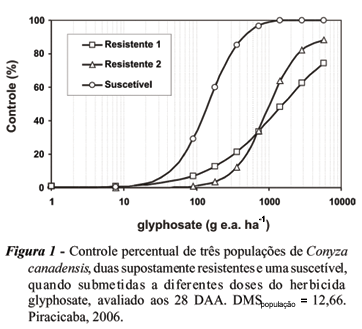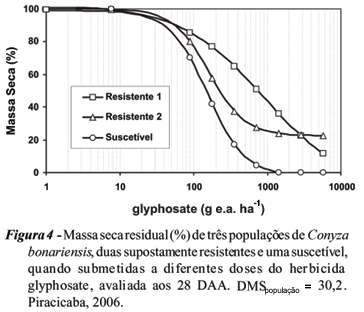The objective of this research was to evaluate, through dose-response curves, the occurrence of glyphosate-resistant biotypes in populations of Conyza canadensis and C. bonariensis; as well as to propose alternative treatments to these biotypes. The experiments were conducted in a greenhouse, using three populations of each species: two with suspicion of resistance to the herbicide glyphosate, and collected in orange orchards located in two different São Paulo state regions; and a susceptible one, collected in an area without herbicide application history. The experimental design adopted was randomized blocks, with four replicates. For each species, the treatments were the result of a factorial combination among the three populations and the herbicide treatments (eight rates of glyphosate or five alternative treatments). The glyphosate rates used were (g e.a. ha-1): 90, 180, 360, 720, 1.440, 2.880, 5.760 and checks without application. As control alternative, the following treatments (g ha-1) were tested: glyphosate + 2,4-D (1.440 + 1.005), glyphosate + metsulfuron (1.440 + 2,4), glyphosate + metsulfuron (1.440 + 3,6), glyphosate + metribuzin (1440 + 480) and checks without application. The results obtained proved the existence of populations of both species with glyphosate-resistant biotypes, with different levels of resistance. All the alternative herbicide treatments controlled efficiently the three populations of each species.
orseweed; EPSPs; biotypes; populations; weeds







